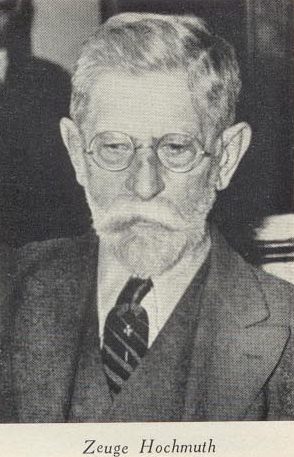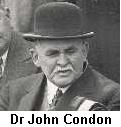
The Unjust Execution of Bruno Richard Hauptmann
Trial Witnesses
at Flemington
Directory Books Search Home Transcript Sources
![]() Lindbergh
Kidnapping Hoax Forum
Lindbergh
Kidnapping Hoax Forum
![]() Lindbergh Kidnapping Hoax
YOU TUBE Channel
Lindbergh Kidnapping Hoax
YOU TUBE Channel
![[ACLU Execution Watch
Counter]](http://www.aclu.org/graphics/dpcounter.gif)
![]() FORENSIC
EVIDENCE
REMOVED BY LINDBERGH FAMILY
FORENSIC
EVIDENCE
REMOVED BY LINDBERGH FAMILY
![]() Lindbergh
Archivist Discovers NEW EVIDENCE
Lindbergh
Archivist Discovers NEW EVIDENCE
DR. CONDON
(JAFSIE) and JOSEPH PERRONE, the taxi driver, both were witnesses
only to extortion. They were used during the trial to  prove Hauptmann wished to use extortion to get $50,000 from
Lindbergh. Besides extortion; however, the prosecution needed to prove that Hauptmann was near the scene of the crime.
Anna Hauptmann's story could easily be canceled out if solid witnesses could discredit her.
prove Hauptmann wished to use extortion to get $50,000 from
Lindbergh. Besides extortion; however, the prosecution needed to prove that Hauptmann was near the scene of the crime.
Anna Hauptmann's story could easily be canceled out if solid witnesses could discredit her.
AMANDUS HOCHMUTH was an eighty-four year-old man who loved to sit and watch an intersection near the Lindbergh home. He was fascinated by the amount of people who accidently drove into a ditch by the road from turning too fast. On March 1, 1932, before noon, Hochmuth said he noticed a dirty green Sedan driving from Hopewell at a fast speed. At the last minute, the driver applied the brakes and the car came to a halting stop in front of the ditch and stalled. As the driver attempted to restart the vehicle, Hochmuth claimed he saw a ladder in the car. Hochmuth said he never forgot the green Sedan nor the driver inside.
The Defense Attorney, Ed Reilly, said that Hochmuth never saw Hauptmann until his photograph appeared in newspapers. It turned out that a state trooper had pointed Hauptmann out to Hochmuth prior to his identification. Hochmuth also had a bad memory, poor eyesight, and was once in an asylum. Hochmuth claimed Reilly spoke all lies, but when asked to describe the man he saw, Hochmuth said he had a red face. Hauptmann was pale.
MILLARD WHITED owned a farmhouse near the Lindbergh home. He claimed that one night in the middle of February he saw a stranger standing on the side of the road that bordered the Lindbergh's estate. The stranger was a surprise to Whited, who rarely noticed anyone new in this isolated area.
About a week later, according to Whited, he was driving from the Lindbergh estate using a back road. He was a mile and a half from the Lindbergh's land when he noticed the same strange man standing along the road. The man started to cross the road, stopped, and then stared in Whited's direction. Whited noticed that the man wore a gray felt hat and a gray suit, and was carrying an overcoat.
Whited was known as a pathalogical liar. The defense produced three witnesses, William Whithead, George Leiz, and William Diehl, who claimed that no one ought to believe anything Whited said. The prosecution team discounted the witnesses, stating that all three men had past disputes with Whited and were merely trying to get revenge. Some, however, believe that Whited made up a story about seeing Hauptmann for financial gains.
Whited denied seeing anything or anyone near the Hopewell house on March 1. After police revisited him with an offer to pay his meal and hotel expenses at the trial he then decided to identify Hauptmann. Whited was said to not be able to identify the two police officers who questioned him for fifteen minutes, yet he could swear that Hauptmann was the man he saw for a few seconds in a moving vehicle?
BEN LUPICA lived with his parents and attended Princeton Preparatory School. While he was driving home on March 1, he stopped at his family's mailbox. He got his mail, drove a little more down the road, and then stopped to read some of his mail. As he read his mail, he heard a car coming. He noticed the advancing car was a dark blue or black Dodge Sedan. He claimed it was made in 1928 or 1929 and had New Jersey plates.
Lupica watched as the driver of the Dodge Sedan drove with fast speed, swerving to the wrong side of the road and almost driving into a cornfield. He said the driver was in his mid-thirties and had a thin, sharp-featured face. The man, Lupica claimed, wore a dark felt hat and a dark overcoat. Lupica started his vehicle and passed the stopped Dodge Sedan. As he drove past the car, he noticed a ladder was sitting inside.
LOU HARDING said he saw a car in the area of the Hopewell house before the kidnaping, and the car had a ladder inside. He said that there were two men in the car. The automobile had stopped to ask for directions to the Lindbergh house. One must wonder why a kidnaper would ask for directions- isn't that a little odd?
Although many witnesses claimed to have seen Hauptmann in New Jersey on March 1, the defense produced a few witnesses to testify that Hauptmann's alibi was true. Walter Manley said he saw Hauptmann at the bakery on March 1. Elvert Carlstrom said that at 8:30 p.m., he also saw Hauptmann at the bakery. Arthur Lasen and Oscar Christensen disagreed with Carlstrom, claiming that Carlstrom was working with them at the time. Louis Kiss said he saw Haputmann on March 1, walking the Christensen's dog, like he did whenever he picked his wife up from work. Kiss said he was walking to meet Leo Singer to sell him some rum he made. Singer argued that Kiss did not give him any rum on March 1.
William Bolmer agreed with Whited, Lupica, and Hochmuth. He, too, saw a car. He saw a dark green Ford coupe pull into his gas station with a ladder inside. However, he said, it was occupied by a man and a woman. And, the man was definitely not Hauptmann.
Hildegarde Alexander, a young female, said that in March of 1932, she saw Dr. Condon at a railroad station in the Bronx, talking to a telegraph operator in the waiting room. Alexander said that she saw a man watching Dr. Condon, a man who looked like Hauptmann. Many believed, however, that Alexander lied because she was in seek of fame. She wanted to be an actress so she lied to get her name in the spotlight.
On April 2, 1932, Philip Moses claimed he saw three guys around a stalled green car, a '32 model. Benjamin Heir said that on that same day he saw a man jump over the St. Raymond's Cemetery wall at 9:30 or 10 p.m. He identified the man as Isidor Fisch.
Sam Streppone, a radio repairman, also produced a story which led some to believe that Hauptmann's Fisch Story was right. Streppone said that he saw Fisch with a package, the size of a shoebox. Bertha Hoff said that in November of 1933, Alfred Budreau and Isidor Fisch came to her house with a package. Her story was attacked by Alfred Budreau, who claimed he did not step in the Hoff house in November. Ottilia Hoerber discredited the story of Benjamin Heir and Streppone. She said that Fisch was at her house from 7-9:30 p.m. on April 2, 1932. Joseph Levenson added to Fisch's alibi. Levenson said that on March 1 he was at Henry Jung's house with Isidor Fisch. They were there from seven to midnight.
From MJR
Thursday, 07-Jan-99 19:06:11
(excerpt from post by MJR)
...consider the following:
---the police investigation of Fisch confirmed that he was a con man and that Hauptmann was one of his victims (just like Hauptmann said);*
---they also learned that Fisch talked to his family in Germany about his partnership with Hauptmann (just like Hauptmann said);*
---Hans Kloppenberg saw Fisch arrive at the Hauptmann home with the box and saw Isidor and Richard go into the kitchen with it(just like Hauptmann said)
---the ledger Hauptmann kept detailed the fur trading transactions and showed that Fisch was grossly overpricing the "furs" he
"bought" (just like Hauptmann said);*
---the money recovered from Hauptmann was wrapped in newspapers with dates consistent with when Hauptmann claimed he found the money;
---with the exception of Cecile Barr, none of the merchants, tellers, etc. who received ransom money before August 1934 identified Hauptmann as the passer;
---the bill taken from Hauptmann's wallet at the time of his arrest was not folded in the manner the police had come to associate with the ransom passer, nor were any of the ones known to have been passed by Hauptmann folded in that manner.
*indicates that this information - although it appears in the files - was hidden from the defense and the jury. Indeed, the State denied that the ledger referenced above even existed.
It goes on from there.
Melinda
Thursday, 07-Jan-99 22:17:13
Thank you Mjr... couldn't have said it better, myself.
.... the FBI has a file on Isidor Fisch. And to think all these years Jim
Fisher would have us believe Hauptmann's explanation was merely a "Fisch" Story. Any serious researcher knows that what the public has been getting all along is one big "Fisher" story. And, sadly enough, most people (those who don't do their homework) will swallow it, hook, line and sinker.
MJR
Saturday, 09-Jan-99 05:39:16
[Mjr's response to an un-named verdict defender]
Let me see if I understand this:
You believe Hauptmann was John, but you don't believe the only two witnesses who identified him as John.
You believe Hauptmann was in the Lindbergh nursery because he had part of the ransom money
2 and 1/2 years later, despite the fact that there was no evidence whatever that actually placed him there. Whether he had an explanation for the money in his possession - an explanation supported by
independent evidence - is irrelevant.
You believe Fisher (who bought the State's claim that Hauptmann did it alone) but now say you will "leave an opening" (an avenue of retreat?) that more than one person was involved, thereby saying that you do not believe Fisher's conclusions. (Read: any evidence that Hauptmann was not guilty can be
explained away by saying that there was someone else involved. Never mind that if that is true then the State's case REALLY falls apart.)
--- WHAT DON'T YOU LIKE ABOUT THE WITNESSES? ---
I don't like witnesses who describe one person and identify another who cannot be the one described.
I don't like witnesses who say the suspect is not the man and then change their testimony and say he is.
I don't like witnesses who say they saw no one and then suddenly claim they did.
I don't like witnesses who wait 2 and 1/2 years to tell ANYONE what they saw.
I don't like eye witnesses who say they couldn't really "see" the men in the line-up but can identify one anyway.
I don't like witnesses who say one thing in their official reports and something different on the stand.
I don't like witnesses who leave out of their testimony, or claim they don't know, significant and material information.
I don't like witnesses who play semantic games with testimony creating a false impression of the facts.
I don't like handwriting experts who concentrate on similarities between a questioned document and an admitted document and completely ignore numerous and significant dissimilarities.
And I don't like a prosecutor who allows them to do those things.
Please visit :
![]() Lindbergh
Kidnapping Hoax Forum
Lindbergh
Kidnapping Hoax Forum
![]() Lindbergh Kidnapping Hoax
You Tube Channel
Lindbergh Kidnapping Hoax
You Tube Channel
ronelle@LindberghKidnappingHoax.com
Books Search Home Transcript Sources
© Copyright Lindbergh Kidnapping Hoax 1998 - 2020